Mark Sisson's Blog, page 241
November 30, 2015
Dear Mark: Too Late for Health? Never.
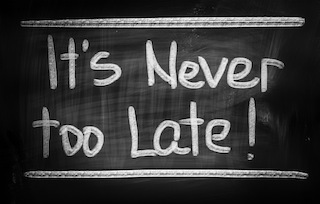 For today’s Dear Mark, I’m answering just a single reader question, but it’s a big one. Janice and her husband have endured their family’s light-hearted ribbing about their “caveman lifestyle” for years. Now that the paterfamilias of the clan is severely obese, almost 80 years old, and recovering from a relatively mild stroke, the family has turned to Janice’s expertise for help changing his ways. How can she convince her father that it’s never too late to get healthy? That changing your diet, exercise, and lifestyle can improve even the most unhealthy person’s trajectory and enjoyment of life? She’s confident that if she can just get through to her dad, the rest of the family—who also needs an intervention—will inevitably follow suit.
For today’s Dear Mark, I’m answering just a single reader question, but it’s a big one. Janice and her husband have endured their family’s light-hearted ribbing about their “caveman lifestyle” for years. Now that the paterfamilias of the clan is severely obese, almost 80 years old, and recovering from a relatively mild stroke, the family has turned to Janice’s expertise for help changing his ways. How can she convince her father that it’s never too late to get healthy? That changing your diet, exercise, and lifestyle can improve even the most unhealthy person’s trajectory and enjoyment of life? She’s confident that if she can just get through to her dad, the rest of the family—who also needs an intervention—will inevitably follow suit.
Let’s give it a shot:
I am looking for information/inspiration to share with my 77 year old father who thinks it’s too late to try and be healthy. I’m not expecting a miracle weight loss story here, however I will not forgive myself if I don’t at least try. Here is our (my 2 sisters our spouses and his 3 grand-daughters) challenge in point form about my (our) father:
– 5’9″ frame approximately 380lbs (I may be low here)
– all blood work comes back (suprisingly normal) but I do not have the details.
– had a stroke 2 weeks ago that luckily left him with nothing but short term memory issues.
– very defensive about his weight, therefore difficult to converse with.
My husband and I have been followers of yours for 4 years and have been “teased” by our family members for our “caveman” lifestyle up until now – now they believe that we should try and share our knowledge to help dad. Even though we have tried to lead by example (all of them overweight and very inactive) none of them have really given us the time of day to share our knowledge because we are “lucky to have that metabolism” and being “fitness freaks” will “do that to ya”. My husband and I are okay with that. At least they are paying attention now.
I would like an article that will give him information that will support losing weight and being active at any age will make a difference. I have read 2 success stories in the past that I had actually forwarded to him (previous to this stroke). One of a woman, perhaps in her 80’s and another of a man I believe in his 60’s. Neither one sparked any conversation with him.
I honestly believe that if I can help my dad live healthier then it may inspire my whole family to jump on “the band wagon”. Something that would make both me and my husband the happiest people in the world.
Any and all article suggestions would be greatly appreciated.
Thank you for your time and consideration.
Kindest Regards,
Janice
Hats off to you, Janice. You’re undertaking the most noble pursuit of all in my opinion. You’re directly contradicting the most pernicious conventional wisdom around—that old folks are going to wither away and die, and they they should simply accept this “fact,” preferably while dozing in front of bad TV at 2 o’clock in the afternoon. We know, and you know, that life doesn’t end after 80. It’s never too late. And this isn’t just inspirational fluff I’m talking. A vast body of research confirms that seniors can and do benefit from healthy lifestyle modifications.
The good news is that your father is likely “obese but metabolically normal.” Obesity usually comes with sky-high inflammation, poor metabolic health, bad lipid numbers, and all other kinds of dysfunction. If your dad is 380 pounds but has normal blood work, he probably has a lower baseline level of inflammation than most other obese people and should respond well to lifestyle modifications. What should he do and what evidence exists that it will help?
He’s got to start lifting heavy things. Older folks need strength training more than younger folks, simply to maintain their quality of life and freedom of movement. It’s the most important type of exercise for this population because lean mass is the single best predictor of mortality risk in seniors. Not BMI, not some specific nutrient or superfood in your diet, not whether or not you meditate every day or practice gratitude or visit the doctor regularly. Lean muscle mass keeps you young and hard to kill.
Okay, but surely it’s too late for a guy in his late 70s to build strength or muscle?
Nope. Multiple studies show that seniors (of both sexes) can build muscle with resistance training. Resistance training can also help seniors lose fat while, most importantly, preserving or even adding muscle. This is key. Your dad wants to lose fat, not “weight.” Resistance training even helps older adults target “hard to reach” visceral fat, the kind that sticks between organs and wreaks metabolic havoc.
Strength training even makes dieting more effective. For instance, seniors who lift weights enjoy better skeletal muscle insulin sensitivity. Higher muscle insulin sensitivity is linked to improved lifespan and better carbohydrate metabolism (since the carbs you eat have a place to go—the muscles).
Now, strength training can intimidate the uninitiated. He might pick up a copy of Body By Science, a system revolving around the safest, most effective, most “bang for your buck” exercises. Its author, Dr. Doug McGuff, contributed a guest post about safe strength training some years back. Read that and you’ll have a good foundation for your father’s training. Whatever you do, consider finding a trainer who specializes in older adults, at least until your dad gets his sea legs.
Walking is also crucial. For one, the ability to walk briskly presages a longer, better-lived life for seniors. One study of nearly 40,000 recreational walkers found that walking intensity predicted mortality risk. Those who walked the fastest tended to die the least. Of course, this wasn’t an interventional trial where walkers were coached to walk faster; this merely observed the relationship between natural walking speed and mortality risk. That said, coaching seniors with mild cognitive impairment to walk regularly has been shown to improve working memory. And taking a short walk in the morning and after meals can reduce postprandial blood glucose and 24-hour glucose control in sedentary seniors.
He’ll need to change his diet. The basic Primal approach—eating more plants and animals, dropping grains, excess carbs, sweets, sugar, soda, and other junk food—is absolutely crucial. Not only will eating more fat and protein and fewer carbs help him drop body fat, a low-sugar diet may protect him against age-related cognitive decline.
He’ll need to emphasize protein. Older folks need more protein than younger people because they’re less efficient at processing and metabolizing it. Seniors lose thigh muscle mass and exhibit lower urinary nitrogen excretion when given the standard 0.8 g protein/kg bodyweight, so eat well above that. Several recent studies indicate that a baseline intake of 1.0-1.3 g protein/kg bodyweight or 0.5-0.6 g protein/lb bodyweight is more suitable for the healthy and frail elderly to ensure nitrogen balance. But that’s just balance, and balance isn’t enough for your dad, especially since he’ll be embarking on his new resistance training regimen (right?). Evidence suggests that increasing protein above normal levels can both improve physical performance without necessarily increasing muscle mass and increase muscle mass when paired with extended resistance training in the elderly. Making sure to obtain enough protein may spontaneously reduce intake of more problematic foods, since protein is such a filling macronutrient.
Include some whey protein, too. Studies show that whey protein is the most effective protein supplement for countering sarcopenia, or muscle-wasting, especially compared to soy. A buddy of mine can attest to this; last year, after his grandmother hadn’t eaten for a few days, was suffering from diarrhea, mental confusion, and basically appeared to be on her deathbed, he made her a whey protein milk shake with egg yolks, heavy cream, and some high-quality ice cream every day. She drank them, kept them down, and recovered. Who can turn down a milk shake, after all? The shakes helped her hold on for another four months until Thanksgiving, when the rest of the family was due to make it out for a visit. She got to say her goodbyes in a reasonably alert state.
He should start eating fish or taking fish oil supplements. Fish oil supplementation increases muscle protein synthesis (required for gaining strength and muscle) in older adults.
So even if your dad just wants to stay where he is without regressing, he needs to start lifting weights, eating more protein (plus some whey), increasing low-level physical activity, and cutting back on carbs, sugar, and bad fats.
But we’re humans. We love stories. We tell ourselves stories about the lives we lead and respond most strongly to the stories others tell. Look what you can do at 87. Look what thousands have done. Look at Papa Grok.
Now, coming from his admittedly severely obese state, he’s not going to be a fitness model and he probably won’t end up with a six pack. That’s fine. That stuff doesn’t matter in the end.
So, Janice’s dad: it’s undeniable. I’ve got both moving anecdotes from people like you and the strongest science on my side, all confirming in no uncertain terms that we can improve our health, vitality, and ability to appreciate life at any age, from any starting point. It’s not too late.
You know when it is too late? When you’re getting your lower leg amputated because your diabetes prevented a shin wound from healing and you were already bedridden from a C. dif infection picked up during your last in-patient procedure. When you flatline in the ambulance after a massive coronary. When you give up, throw in the towel, and convince yourself you’re a lost cause. Don’t get to that point.
It’s times like these that written text fails and I wish words could enable the raw transmission of infectious emotion. Hopefully you can provide that. I’m confident you, as a loving daughter, can. Let us know how it all goes.
Thanks for reading, everyone. If you or anyone you know has any positive stories that might convince Janice’s dad to start making better choices, light up the comment section! People need to hear!




November 29, 2015
Weekend Link Love – Edition 376

We’re starting another round of The 21-Day Transformation Challenge on the Vimify app, Monday, November 30th! Whether you’re new to the program, you want to recommit, or you just need a challenge, now’s the time!
Research of the Week
We may have unknown lifeforms residing in our guts.
How farming changed the European genome.
Fraudulent studies contain more “linguistic obfuscation.”
New Primal Blueprint Podcasts

Episode 95: Elle Russ and Eli Rohde: Our very own dynamic duo returns for a delicious episode packed with creative recipe ideas, kitchen hacks, and innovative ways to optimize your Primal lifestyle.
Each week, select Mark’s Daily Apple blog posts are prepared as Primal Blueprint Podcasts. Need to catch up on reading, but don’t have the time? Prefer to listen to articles while on the go? Check out the new blog post podcasts below, and subscribe to the Primal Blueprint Podcast here so you never miss an episode.
How Bad is Charred Meat, Really?
Primal Christmas Comes Early?
Also, be sure to check out and subscribe to the Primal Endurance Podcast.
Weekly sweepstakes: Write a review for The Primal Blueprint Podcast or The Primal Endurance Podcast on iTunes and submit this form for a chance to win a Primal prize package. One new winner is chosen every week!
Interesting Blog Posts
These scientists claim to have created an algorithm to accurately predict a person’s optimal diet.
Hey, you with the knee pain: stop doing this with your toes.
How objective and dispassionate a nutrition expert is Dr. Katz, really?
Media, Schmedia
Researchers are finally acknowledging that gut bacteria may play a causative role in autism.
The director of We Love Paleo, the new Australian documentary about the ancestral health movement, was recently interviewed on Australia’s The Daily Edition.
Everything Else
Though the Super Bowl has passed, I’d still recommend checking out the newest edition of Pigskin Paleo, a book of delicious paleo-friendly game day sports bar-esque recipes.
Tim Noakes, on trial.
Ouch. Also, haha.
Even your coffee maker’s got its own microbiome.
The FDA just approved GM-salmon.
Recipe Corner
This video will show you how to make the perfect Brussels sprouts.
Pumpkin stuffed bacon-wrapped dates. Do I need to write anything more?
Time Capsule
One year ago (Dec 1 – Dec 7)
How to Leverage the Minimum Effective Dose in Your Primal Life – What does it mean for your diet, exercise, and overall lifestyle?
Should You Eat Periodic “Cheat” Meals? – How “unhealthy” food may be just what the doctor ordered, sometimes.
Comment of the Week
I like charred meat so I just formed a belief that fiber from vegetables, fruit, and psylium simply carry out any nasty carcinogens. It’s not very scientific, but I sleep well. This has saved me a few times from long articles that prove my premise.
– If it works, it works.




November 28, 2015
Slow-Simmered Cabbage Soup
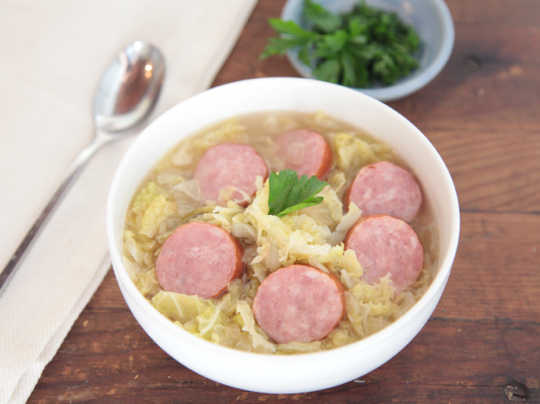
Cabbage is rarely described as tasting rich, but when simmered long and slow with plenty of butter and olive oil, that’s exactly the outcome. Although buttery, slow-simmered cabbage can be a dish in itself, add broth and sausage and you’ll get a very simple soup with incredibly rich, comforting flavor.
When cooking cabbage this way, high-quality butter and olive oil make a difference in flavor and healthfulness. Use grass-fed butter, if possible. Buy olive oil that’s as local as possible, has real flavor and has been put through the “fridge test.”
Sausage doesn’t have to be the finishing touch to this cabbage soup. Use the cooked cabbage as a base for vegetable soup, or add cooked ground meat or thin slices of pork or beef instead. The cooked cabbage can also be frozen, then added to broth later on a busy night to make a quick pot of soup.
Servings: 4
Time in the Kitchen: 30 minutes hands-on time, plus 1.5 hours to simmer
Ingredients:
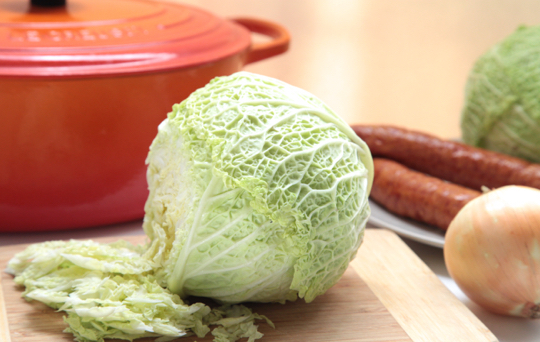
3 tablespoons unsalted butter, divided (45 g)
1/4 cup extra virgin olive oil (60 ml)
1 onion, chopped
3 garlic cloves, chopped
1 or 2 savoy cabbage heads (2 pounds/1 kg total weight) quartered, cored, and very thinly sliced
3 cups chicken or beef stock (700 ml)
1 Kielbasa or other sausage, sliced (8 ounces/340 g)
1/4 cup finely chopped parsley or dill (60 ml)
Instructions:
In a Dutch oven or wide, deep pot over medium heat, melt 2 tablespoons (30 g) butter with olive oil. Add onion and cook until golden, 8 to 10 minutes. Add garlic, cook a few minutes until soft, then add cabbage in batches, stirring well to coat in oil.
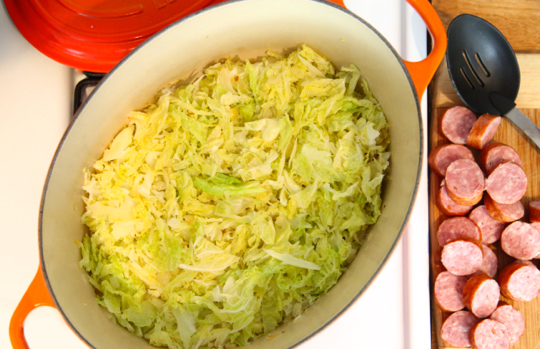
When the cabbage has wilted a little, season with a light sprinkle of salt and pepper and cover the pot. Reduce heat to low and cook for 1.5 to 2 hours, stirring occasionally. If the pot seems dry, add a little bit of water. When it’s done, the cabbage will be very soft and tender.
(At this point, the cabbage can be cooled and frozen, if desired. It can then be re-heated in broth for soup.)
Turn heat up to medium. Add broth and kielbasa. Bring to a simmer, uncovered. Cook until the sausage is completely warmed through, about 10 minutes. Add the remaining tablespoon of butter, fresh herbs, plus more salt and pepper to taste if needed.
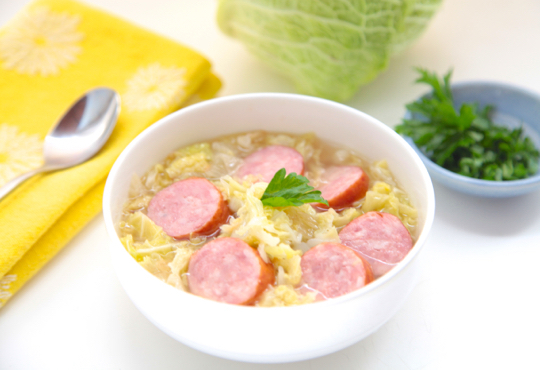




November 27, 2015
21 Days Turned Into One Year and a 70 Pound Weight Loss
Age: 38
In Gary’s words: “One year later my life and my perspective have completely changed for the better.”



21 Days Turned Into One Year and a 70 Pound Weight Loss
It’s Friday, everyone! And that means another Primal Blueprint Real Life Story from a Mark’s Daily Apple reader. If you have your own success story and would like to share it with me and the Mark’s Daily Apple community please contact me here. I’ll continue to publish these each Friday as long as they keep coming in. Thank you for reading!
 My primal journey started one year ago and it has been an amazing transformation. I decide to write my story because others need to see what a primal lifestyle can do for them. I realized that the success stories on Mark’s Daily Apple have helped encourage and motivate me throughout my journey, so here is my opportunity to give back.
My primal journey started one year ago and it has been an amazing transformation. I decide to write my story because others need to see what a primal lifestyle can do for them. I realized that the success stories on Mark’s Daily Apple have helped encourage and motivate me throughout my journey, so here is my opportunity to give back.
Just like so many others, my diet consisted of carbs (and more carbs), as early as I can remember. Growing up in a Caribbean household, we had lots of rice, flour, and bread in the house at all times. I was a big kid from the beginning, with a passion for playing sports. The neighborhood kids had a weekly tradition of football and basketball games that we enjoyed for hours at a time. Despite the high activity level, I had grown to 240 pounds by the time I was 14 and began to feel the real pressure of being an overweight kid. I lacked a lot of self-confidence and tried to stay away from the spotlight as much as I could.
My confidence during my high school years changed somewhat when I began playing football and started lifting weights on a regular basis. By the time I was a senior, I grew to 6’3” and 265 pounds of some muscle, but mostly fat. I was a good athlete, so I continued my football playing days for four more years in college and managed to maintain my weight and physical activity. But throughout those years I was always concerned about my weight and self-image.
 Fast forward to about two years after graduating college and my weight began to really spiral up. I no longer had structured physical activity through football and reality of working a 9 to 5 took its toll. So as a former athlete, my first line of defense was to lift and run my weight off, and it would work temporarily, but then the weight would come back on.
Fast forward to about two years after graduating college and my weight began to really spiral up. I no longer had structured physical activity through football and reality of working a 9 to 5 took its toll. So as a former athlete, my first line of defense was to lift and run my weight off, and it would work temporarily, but then the weight would come back on.
Throughout the next ten years, I tried and failed every possible weight loss gimmick or diet you could think of—from magic pills and super juice, to even the dreaded calorie restriction/counting systems. To my credit, I never stop believing I could change and that there was a real solution out there. So eventually I stumbled on to The Primal Blueprint after a coworker (quick plug for Mr. Beers!) recommended I read the book Why We Get Fat by Gary Taubes, and suggested I go to Mark’s Daily Apple to get real solutions for my weight problems.
So the first thing I did was start The Primal Blueprint 21-Day Challenge, in hopes of creating a healthy habit I could sustain. I emptied out the pantry and purged all other non-primal foods from the kitchen. Next, I printed the shopping list and attempted to purchase as close to the recommended foods as I could from my local grocery stores.
The first week was hard for me because I had relied so much on quick-carb foods like oatmeal, sandwiches, and sugary snacks to satisfy my on-the-go eating habits. My wife also struggled with what to make on a daily basis, since all she knew was the carb-loaded meals that included pasta, rice, and starchy tubers. We both suffered from sugar withdrawals during that first week, as well as headaches and feeling sluggish. The next couple of weeks got better as we began to utilize the recipe section of Mark’s Daily Apple and figured out which food combinations worked best for our tastes buds. We began using cauliflower and squash, and mixing up the meats we eat with various vegetables. We found a new love for leafy greens and different fish types. It was almost like discovering newly found foods types that we had never heard of.
During the first 21 days I lost 15 pounds and was hooked on the process. Every month for the next 11 months, I averaged four to eight pounds lost per month. The second phase of my primal journey was to changing my cardio base exercising, and two hour long weightlifting sessions, to slow pace walking and short heavy lifting sessions. I worked out all at home with a few weights and resistance bands. I also did sprints once every seven to ten days. One additional aspect that I adopted was intermittent fasting, which really made a difference in maintaining my weight and energy level.
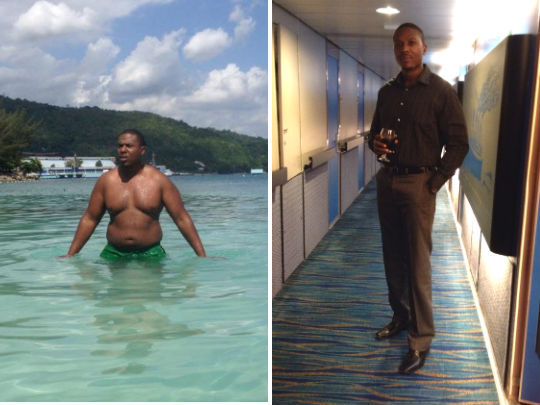
One year later my life and my perspective have completely changed for the better. I started the primal lifestyle on 11/1/2014 and in one year lost 70 pounds. When I began I was 288 pounds and now I am 218 pounds of primal happiness. It started for me with small steps that Mark laid out in The Primal Blueprint and then I personalized it based on the knowledge I gained.
 The biggest step was getting my wife (AKA the Love of my Life) on board so we could do this together. **Word of Advice — Your significant other can really help or hurt your journey.** And as a result she has lost 30 pounds in the past year as well. We are now enjoying real food and trying new recipes together, which has strengthened our bond. We are also working-out and taking long walks together. Sometimes we reflect on how easily it seems now to maintain this new lifestyle. The best part of this is that you don’t have to be perfect every time. I have strayed some weeks where I was maybe 50% primal, but then I would jump right back into it. My wife has been about 80% primal the entire time and has maintained her weight. The empowerment of knowing what to eat and do to keep the weight off has been liberating. Losing this much weight has been physically altering but the new found self-image and belief in myself has been the real reward.
The biggest step was getting my wife (AKA the Love of my Life) on board so we could do this together. **Word of Advice — Your significant other can really help or hurt your journey.** And as a result she has lost 30 pounds in the past year as well. We are now enjoying real food and trying new recipes together, which has strengthened our bond. We are also working-out and taking long walks together. Sometimes we reflect on how easily it seems now to maintain this new lifestyle. The best part of this is that you don’t have to be perfect every time. I have strayed some weeks where I was maybe 50% primal, but then I would jump right back into it. My wife has been about 80% primal the entire time and has maintained her weight. The empowerment of knowing what to eat and do to keep the weight off has been liberating. Losing this much weight has been physically altering but the new found self-image and belief in myself has been the real reward.
Thank you Mark for what you’ve done for me and so many other people around the world.
Gary
A brand new 21-Day Transformation Challenge begins Monday, November 30th. Click here to join!




November 26, 2015
5 Responses When Relatives Ask Why You’re Not Eating Stuffing This Thanksgiving
 Here we are—another day of turkey, gathering, gratitude and (maybe) questions. For some of us, our relatives stopped asking long ago. Or maybe we celebrate alone or with a smaller, more sympathetic crowd these days. Many of us, however, will find ourselves mixing with non-Primal eaters. We’ll likely even be the typical lone figure strategizing our choices among the high-carb spread. Bring on the turkey legs, the Brussels sprouts, the salad. The stuffing and sweets on the other hand—maybe not so much… And so the inquiry often begins. As I wish you all, kind readers, a Happy Thanksgiving from the U.S., I thought I’d offer some of my favorite responses (some serious, some not) to the common questions we field at the holiday dinner table. To all of our MDA community, I’m grateful for your valued following and your incredible contributions over the years. I hope you’ll add your own favorite personal retorts, strategic redirects and discussion starters for the dinner table today!
Here we are—another day of turkey, gathering, gratitude and (maybe) questions. For some of us, our relatives stopped asking long ago. Or maybe we celebrate alone or with a smaller, more sympathetic crowd these days. Many of us, however, will find ourselves mixing with non-Primal eaters. We’ll likely even be the typical lone figure strategizing our choices among the high-carb spread. Bring on the turkey legs, the Brussels sprouts, the salad. The stuffing and sweets on the other hand—maybe not so much… And so the inquiry often begins. As I wish you all, kind readers, a Happy Thanksgiving from the U.S., I thought I’d offer some of my favorite responses (some serious, some not) to the common questions we field at the holiday dinner table. To all of our MDA community, I’m grateful for your valued following and your incredible contributions over the years. I hope you’ll add your own favorite personal retorts, strategic redirects and discussion starters for the dinner table today!
“You know, I’ve found I just feel better if I avoid certain foods. Bready-type foods are among them.”
It’s the perfect choice when you’re looking for a simple, no-nonsense response. And it’s all “I-statements” to boot! (Don’t you feel psychologically sensitive knowing that?) It’s harder to argue with people’s physical experiences. Feel free to get as detailed as the situation calls for.
“I’m just doing my bit this holiday to keep the national health care expenditure down. Have you read the latest diabetes figures? And I’m on a higher deductible insurance plan these days anyway.”
The fact is, most people will miss the real connection and latch onto what they know and want to complain about. For those who don’t mind opening the political can of worms or delving into personal finance, it’s a great way to divert the conversation toward something everyone can weigh in on. Sure, some perceptive (or just curious) member of your party might well bring the stuffing topic back around again, but then you can up the ante (or excuse yourself for an important faux phone call).
“I’m committing the day to indulging my inner carnivore and not every side dish makes the cut as a result. Pass the turkey, please!”
Oh, you’ll get a strange look, but most people will be stumped—or a little nervous to talk to you any further.
“You know, maybe I’ll try just a bit. We don’t have a dinner this big every day, now do we?”
For those of you who are bringing your 80/20 to the table, sampling all the annual fare may not be such a bad idea. If you can do this and not get sucked into a craving spiral the day after, I consider this a completely valid choice (and one I’ve made in the past).
“Oh, cripes, the stuffing…. Seriously, doesn’t that give you gas? I know I always pay for it afterward. Good luck with that!”
Let’s face it: you’ll either start a raucous bout of laughter and jokes among the guests, or you’ll stop that inquest straight up while the questioner slinks back in his chair and your mother begs you with her famous death stare to change the subject. Who knows? You might get to sit at the kids’ table after that, and we all know the conversation is better there anyway.
Happy Thanksgiving, everyone! I’ll look forward to reading your best T-Day (or any big dinner) replies. With gratitude and best wishes to you all this holiday…thanks for reading.




November 25, 2015
How Bad Is Charred Meat, Really?
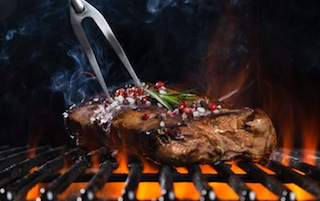 There’s nothing like charcoal-grilled meat. It’s not just the food itself, although that’s amazing. It’s the entire experience: being outside in fresh (albeit smokey) air, the sizzle when you slap that meat down on the hot grill, the smell of the smoke. Even the tools we use when grilling are bigger and savager and more rewarding than the dainty implements used inside. We don’t gently flip the steak. We grab it with huge metal tongs and throw it down. There’s less precision and more art. And the flavor can’t be found anywhere else. The smoke, the flame, the char, the grill marks, the color, the dripping fat—they are irreplaceable.
There’s nothing like charcoal-grilled meat. It’s not just the food itself, although that’s amazing. It’s the entire experience: being outside in fresh (albeit smokey) air, the sizzle when you slap that meat down on the hot grill, the smell of the smoke. Even the tools we use when grilling are bigger and savager and more rewarding than the dainty implements used inside. We don’t gently flip the steak. We grab it with huge metal tongs and throw it down. There’s less precision and more art. And the flavor can’t be found anywhere else. The smoke, the flame, the char, the grill marks, the color, the dripping fat—they are irreplaceable.
But is it healthy? Is that perfect sear costing you years off your life? Are those BBQ ribs adorning your colonic interior with pre-cancerous polyps?
That’s what we’ve been told happens. That’s what’s supposedly behind the relatively inconsequential increases in colorectal cancer risk seen in red meat eaters. In previous posts, even I’ve recommended gentle cooking techniques and cautioned against excessive intake of grilled, seared, barbecued, and fried meat, especially without using protective marinades and eating protective vegetables. I reiterated this stance a couple weeks ago in my response to the WHO report on red meat and colorectal cancer.
A couple nights back, I found myself hovering over a pair of lamb shoulder chops sizzling on a charcoal grill, watching the marrow render before my eyes, anticipating the blackened lamb fat and caramelized marinated meat. Could it really be so bad? Should I have dropped these chops into a pot of boiling water instead?
As it turns out, I may have overstated the danger of the carcinogenic compounds found in charred meat.
First, let’s look at heterocyclic amines (HCAs), which get the most bad press. HCAs form when sugars, amino acids, and creatine in meat react with heat. They can be carcinogenic in animal studies, and there are weak associations between colon cancer rates and estimated HCA intake in humans. The epidemiology has been covered. The animal studies purporting to show the carcinogenic effects of cooked meat compounds invariably use physiologically-irrelevant conditions; the doses of HCAs that cause colorectal cancer in animals are hundreds of 1000s times higher than the dose of HCAs humans get from cooked meat.
And when researchers try to cause cancer by feeding actual meat, they either come up empty or resort to restricting some nutrients and adding others until they get a hit.
They put the animals on a low-calcium diet. Calcium is known to inhibit the carcinogenicity of cooked meat, and researchers who want to observe colon cancer in lab animals know they have to limit the mineral.
They get things rolling by dosing the animals with powerful carcinogens. Which doesn’t even always work. In one paper, a bacon-based diet actually protected rats against colon cancer after they were injected with a known colon cancer promoter. That must have been an awkward moment in the lab.
They put the animals on a low-fat diet. Feeding well-cooked beef to rats on a high-fat (beef tallow-based) diet did not cause colon cancer in one paper, even after injection with a colon cancer-promoter. Only the rats on low-fat diets got cancer.
In addition to the mechanistic flaws, chicken is a major source of HCAs in the human diet, yet it’s never associated with colon cancer in these epidemiological studies.
A lot of things don’t really add up. While I wouldn’t say HCAs are healthy, I don’t think they’re a huge danger. And even if they’re valid and reflect causality, the associations between red meat and cancer are extremely weak.
Another candidate is heme—the animal-based iron that’s far more bioavailable than plant-based iron. It’s high in red meat and epidemiology links heme iron intake to colon cancer. Animal studies seem to show that heme iron can promote colon carcinogenesis, so what are the proposed mechanisms and do they apply to you and me?
The proposed mechanism with the most support is heme’s oxidative effect on fatty acids. In one study, feeding heme iron to rats promoted colon cancer only when fed alongside high-PUFA safflower oil. Feeding MUFA-rich and far more oxidatively-stable olive oil alongside the heme prevented the colon carcinogenesis. Oh, removing calcium from the diet also promoted colon cancer in the animals, as did the carcinogen they were summarily injected with at the start of the study.
A 2000 study purported to counter the claim that fat has an effect on heme’s toxicity, finding that whether fat was 10%, 25%, or 40% of a rat’s diet had no effect on the carcinogenicity of added heme. There’s no mention of the fatty acid composition of the added fats, but given that most rodent diets (especially 15 years ago) use corn or soy oils, it’s a safe bet that these rats were on 10%, 25%, and 40% vegetable oil diets. 10% of calories from PUFA is quite high and provides plenty of substrate for heme-induced peroxidation. 10% from PUFA may be the “ceiling” after which additional PUFA has no further effect.
A 2004 study had similar results, finding that meats containing medium to high amounts of heme—beef and beef blood sausage—promoted carcinogenic conditions in the colon, while low-heme chicken did not. Sounds bad for red meat, but take a look at the fat source in the animals’ diets: either corn oil or soybean oil, two of the most PUFA-laden, unstable fats available. Would the carcinogenic effects of heme-rich meat persist if the animals were eating MUFA or saturated fat-based diets?
A recent paper offers a potential answer. Mice were split into three groups. One group got heme iron plus omega-6 PUFA (from safflower oil). One group got heme iron plus omega-3 PUFA (from fish oil). The third group got heme iron plus saturated fat (from fully hydrogenated coconut oil, which contains zero PUFA). To determine the carcinogenicity of each feeding regimen, the researchers analyzed the effect the animals’ fecal water (which is exactly what it sounds like) had on colon cells. The fecal water of both PUFA groups was full of carcinogenic indicators and lipid oxidation byproducts, and exposing colonic epithelial cells to fecal water from PUFA-fed mice was toxic. The coconut oil-derived fecal water had no markers of toxicity or lipid oxidation.
If you’re eating lots of polyunsaturated fats with your meat, if you’re cooking your meat in bad oils, or you’re eating meat that’s been cooked in refined high-PUFA seed oils (like most prepared and restaurant food), heme may cause problems. Most people are, which may be why those modest associations between red meat and colon cancer exist. But you’re not doing that, are you?
If you’re still hanging your hat on the heme hypothesis, look again. Given the frequent (if unimpressive) relationship between eating well-done meats and colorectal cancer, you’d think that well-done meat must contain more heme iron than rarer meats. Only they don’t. A paper from 2012 sought to create a heme iron database for various meats according to cooking method. Across the board, the heme content remained unchanged whether the meat was well-done or rare.
In short, the arguments for HCAs and heme iron weaken under scrutiny, especially if we’re talking about people following the Primal eating plan, the paleo diet, or any real-food way of eating that eschews high-PUFA seed oils and emphasizes quality fruits, vegetables, spices, herbs, prebiotic fiber, and antioxidant-rich marinades.
I think I’ll keep enjoying my grilled lamb, and enjoying the grilling of lamb. Not every day, as there’s probably an upper limit and there are so many other good things to eat, but I’m not worried.
What about you, folks? Do you still enjoy grilled/seared-on-the-outside-rare-in-the-middle red meat?
Thanks for reading, everyone. Take care.




November 24, 2015
Primal Christmas Comes Early?
 I’m getting a head start on my holiday shopping, and that includes gifts for my readers. So, I’ve got three “stocking stuffers” to help you get prepped and pumped for the holiday season. I’m including my latest eBook 6 Foods You Should Be Eating for a Healthy Gut, a free jar of healthy and delicious Primal Kitchen™ Mayo, and a heavily discounted digital copy of Paleo Primer, complete with over 100 must-eat paleo recipes. There are also over a dozen additional popular paleo books on sale today, and some really exciting news from Primal Kitchen.
I’m getting a head start on my holiday shopping, and that includes gifts for my readers. So, I’ve got three “stocking stuffers” to help you get prepped and pumped for the holiday season. I’m including my latest eBook 6 Foods You Should Be Eating for a Healthy Gut, a free jar of healthy and delicious Primal Kitchen™ Mayo, and a heavily discounted digital copy of Paleo Primer, complete with over 100 must-eat paleo recipes. There are also over a dozen additional popular paleo books on sale today, and some really exciting news from Primal Kitchen.
Let’s jump right in!
Free eBook: 6 Foods You Should Be Eating for a Healthy Gut
 First up is my latest eBook, 6 Foods You Should Be Eating for a Healthy Gut. This title is about—you guessed it—the specific foods to eat and avoid in order to obtain the healthiest gut possible. Gut health is paramount, as you well know. A healthy gut enables our digestion and immune response, our resistance to allergies and food sensitivities, and it even helps us maintain an even keel by regulating our mood. Without a healthy gut, we can’t truly be healthy, happy, productive or have the body we want. After reading this eBook, you’ll know exactly what to do (and what not to do) to get one.
First up is my latest eBook, 6 Foods You Should Be Eating for a Healthy Gut. This title is about—you guessed it—the specific foods to eat and avoid in order to obtain the healthiest gut possible. Gut health is paramount, as you well know. A healthy gut enables our digestion and immune response, our resistance to allergies and food sensitivities, and it even helps us maintain an even keel by regulating our mood. Without a healthy gut, we can’t truly be healthy, happy, productive or have the body we want. After reading this eBook, you’ll know exactly what to do (and what not to do) to get one.
You can get this 6 Foods Your Should Be Eating for a Health Gut for free here.
Free Jar of Primal Kitchen™ Mayo
The second is a giveaway of Primal Kitchen’s Avocado Oil Mayo sponsored by our friends at Thrive Market.
Thrive’s latest deal is for both new and existing customers. If you haven’t joined Thrive Market, do so today and you’ll get a 12-ounce jar of Primal Kitchen™ Mayo for FREE (just pay the $1.95 shipping fee). Existing members can also get a free jar when they make a purchase of $50 or more on Thrive.
The free bone broth offer that Thrive Market ran a couple weeks ago sold out in a matter of days, so click here to take advantage of this week’s deal, as I’m pretty sure Primal Kitchen™ Mayo may just go even quicker.
If you’re still on the fence, let me tempt your taste buds with some avocado oil health facts.
 What are most conventional mayos made from? Unhealthy canola and soybean oils.
What are most conventional mayos made from? Unhealthy canola and soybean oils.
What is Primal Kitchen™ Mayo made of? Avocado oil—a heart-healthy oil that is about 70 percent monounsaturated fats. These “good fats” help the body regulate cholesterol levels, as well as increase the absorption of antioxidants and other nutrients. That’s why Primal Kitchen™ Mayo is the holy grail of condiments—every dollop of this mayo is so healthy you can use it lavishly to upgrade the flavor (and nutrition!) of your meal.
Get Paleo Primer on Kindle for $2.99 Today Only
 And then, of course, you’ll need some tasty recipes to use with your free jar of Primal Mayo, so, in partnership with PaleoDork.com, I’m discounting the Kindle version of Paleo Primer to just $2.99 on Tuesday, November 24 (today!). Paleo experts Keris Marsden and Matt Whitmore prime readers on the essentials of paleo eating, and then set us up in the kitchen with over 100 delicious paleo/primal recipes.
And then, of course, you’ll need some tasty recipes to use with your free jar of Primal Mayo, so, in partnership with PaleoDork.com, I’m discounting the Kindle version of Paleo Primer to just $2.99 on Tuesday, November 24 (today!). Paleo experts Keris Marsden and Matt Whitmore prime readers on the essentials of paleo eating, and then set us up in the kitchen with over 100 delicious paleo/primal recipes.
The guys over at PaleoDork.com have also organized 14 other popular paleo books to be heavily discounted today. Some of the biggest names in the paleo world are featured, including books by Chris Kresser, Melissa Joulwan, Cate Shanahan, Carrie Vitt, Paul Jaminet, Russ Crandall, Sarah Fragoso, Paleo Parents, Tammy Credicott, Jason Seib, Liz Wolfe, Kristen Michaelis, Bill & Hayley Staley, and Caitlin Weeks & Diane Sanfilippo are all going to be discounted to under $3 for today only.
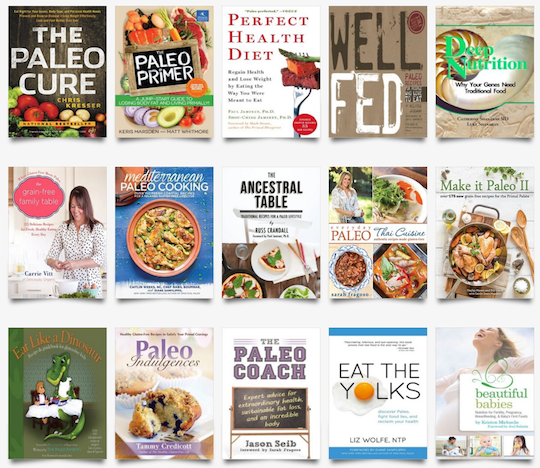
To snag a digital copy of Paleo Primer and any of the rest, visit this page and follow the respective links. While there you can also subscribe to the Paleo Dork newsletter if you are so inclined. It’s a daily deals newsletter for paleo enthusiasts. As they say, “each weekday we send you savings on all things Paleo to help you live the hunter-gatherer lifestyle without losing your loin cloth.”
New Primal Kitchen Products – Coming Soon!
People love Primal Kitchen™ Mayo (that much is now a given). But after its mind-blowing success, my team and I are prepped to launch our highly anticipated (and what are sure to be awesomely palate-pleasing) new products to pantries across the country. Here’s a brief run-down of what’s coming soon.

Greek Vinaigrette: Love a classic vinaigrette? How about one made with pure avocado oil and oil of oregano (hailed as one of the most medicinally potent essential oils around). Not only does its taste blow most other vinaigrettes out of the water (no offense, canola oil vinaigrettes), it does so with a nutritional profile that even the most fastidious health-conscious shopper won’t help but swoon over.
Honey Mustard: A bright, rich, and warm fusion of avocado oil, all natural honey, ground mustard seeds and spices. This dressing packs a one-two punch: sweetness (with a rock bottom carb profile) and a slew of simple, organic ingredients that give it the cleanest seal of approval.
Ranch: Mission impossible, made possible. What if I told you that we’ve created a dairy-free, unbelievably delicious, and—get this—healthy ranch dressing? You’d probably say I was lying—or at least playing the part of a fisherman and stretching the story a bit. But I’m not. After going through countless test runs, we’ve created a creamy, full flavored, spectacularly delicious, dairy-free, and healthy fat-laden masterpiece. Are you a health-conscious ranch fan? Say hello to your new best friend.
Chipotle Lime Mayo: As if our traditional flavor wasn’t enough, you’ll soon be able to slather on a heavy serving of zesty, lime infused mayo into all your favorite recipes that need a kick. Or, you can use it as a standalone dip or spreadable aioli. Once you get your hands on this mayo, you’re not going to want to let it go.
Back to the Basics: We’re also launching our own label of the nutritional powerhouse that acts as a base to all our sauces: pure, centrifuge extracted avocado oil! So whether you want to whip up your own cold at-home recipes, or use it as a healthy high smoking point cooking oil, you can do it with a bottle of trusted Primal Kitchen™ avocado oil!
Last but Not Least (drum roll please)…
If that wasn’t enough, we have a new item hitting the shelves that, like our sauces and mayo, is going to be a game changer for a product category that has all too many times been overrun with average, over-hyped, and under-delivered products.
In December, we’re introducing the first nutritional bar of its kind. Now, before you roll your eyes at yet another “healthy” bar hitting the shelves, I think you’ll want to take a look at what’s inside our new Dark Chocolate Almond Bar.

I’m talking about only the finest ingredients. Heck, it didn’t even seem financially possible to source the ingredients for this bar and make it saleable, which is why I have been sitting on the idea for the better end of almost ten years. But we did it.
It’s packed with 15 grams of protein from all natural, grass-fed collagen sourced from Brazil, pumpkin seeds, dark cocoa, coconut oil and zero added sugar or artificial sweeteners. That all sounds great, right? But here’s the clincher that makes this bar revolutionary: the taste. By a sheer force of ingenuity, this bar (brace yourself) tastes like a gooey brownie you’ll want to pull apart with your teeth. Sold yet? You will be after your first bite.
All six of these delicious and healthy Primal-approved products will be rolled out in December and January. To ensure you get the memo when they become available, be sure to subscribe to the Mark’s Daily Apple, Primal Kitchen, and/or Primal Blueprint newsletters.
I know that’s a lot, so to recap:
As my gift to you, get my latest eBook here.
Go to Thrive Market to register and receive your free jar of Primal Kitchen™ Mayo before supplies run out.
Go to PaleoDork.com to get books from a bunch of big names in the paleo world discounted to under $3 TODAY ONLY—including Paleo Primer.
Subscribe to the Mark’s Daily Apple, Primal Kitchen, and/or Primal Blueprint newsletters, so you’re sure to know when the new line-up of Primal Kitchen products drops.
Happy holidays, everyone!
Like This Blog Post? Subscribe to the Mark's Daily Apple Newsletter and Get 10 eBooks and More Delivered to Your Inbox for FREE



November 23, 2015
Dear Mark: Back Health and Weight Lifting, Blood Pressure on Primal
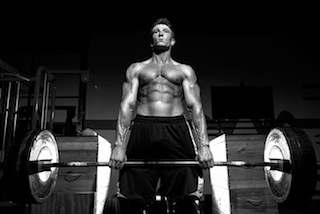 For today’s edition of Dear Mark, I’m answering two reader questions. First, Will wonders whether his brother’s recent back injury from lifting a bag of mortar and his father’s lifelong bout with spinal stenosis following a deadlift injury should inform his exercise choices. Is the deadlift inherently risky? How prevalent is disc degeneration, and what does it mean? Then, Mike is a very active 52 year-old with a history of great blood pressure readings who’s been Primal for four months. At his latest checkup, his blood pressure and heart rate were elevated. Should he worry? What could it mean?
For today’s edition of Dear Mark, I’m answering two reader questions. First, Will wonders whether his brother’s recent back injury from lifting a bag of mortar and his father’s lifelong bout with spinal stenosis following a deadlift injury should inform his exercise choices. Is the deadlift inherently risky? How prevalent is disc degeneration, and what does it mean? Then, Mike is a very active 52 year-old with a history of great blood pressure readings who’s been Primal for four months. At his latest checkup, his blood pressure and heart rate were elevated. Should he worry? What could it mean?
Let’s go:
Dear Mark,
A few weeks ago my brother slipped a disc lifting a bag of mortar (with improper form, obviously). However, he’s 24. He is healthy, fit, and a decorated athlete. So, he visits the doctor and the doctor informs him of the normality of his situation, saying, “90% of people will have at least one deteriorating disc in their back by the time they are 30 years old.”
Furthermore, my father has battled spinal stenosis since college after a deadlifting injury. He just recently had surgery which, while it did improve his mobility, totally took him out of commission for months upon months. On top of that, his exercise routine is now severely and permanently limited.
My question is, are deadlift and squat and other heavily weighted movements like that doing more harm than good?
I am 19 years old. I’m a big guy and I like to stay fit, so I do these types of lifts on a weekly basis. But am I setting myself up for a lifetime of back injury?
Please provide some clarity to me and the other readers. I do not wish to be another statistic.
Sincerely,
Will
Your brother’s story is a common one. If someone throws out their back, it’s usually because they lifted something wrong. It doesn’t even have to be anything particularly heavy. I’ve seen people throw out their back lifting a cat, or a jug of water, or a piece of trash. It’s a mix of bad luck, carelessness, and poor technique. So in some respects, that motion—picking stuff off the ground by hinging at the hips—seems inherently risky. If you can hurt yourself lifting a tabby cat, how could deadlifting twice you body weight ever be a good idea?
Well, there are some major differences.
Deadlifts are planned. It’s a formal occasion. You don’t just randomly reach down and grab the bar and lift it up any old way. You set yourself. You activate the musculature along the spine. You arrange your feet underneath the bar just so. You’ve been here a hundred times before. You know what you’re doing and what’s going to happen. Grabbing the cat darting between your legs is a split-second reaction, and that’s where mistakes are more likely to occur.
Bars with 45 pound weights on either end are designed to be lifted from the ground. Most people with two arms and two legs and no serious injuries or limitations can figure out a way to safely lift the bar.
There’s even research suggesting that deadlifts can improve symptoms in patients with low-level back pain, provided their back extensors are sufficiently strong and their pain isn’t too bad.
But I do agree that any exercise with the potential to increase jump height, bone mineral density, and overall beastly strength also carries some risk. So be careful:
Don’t deadlift when you’re tired. Deadlifts become dangerous when you’re fatigued. That’s why you don’t program heavy deadlifts after sprinting on the rower, back squatting for five sets of five, and maxing out your snatch; you’re liable to hurt yourself. Besides, to get the most out the deadlift you should go into it fresh.
Consider deemphasizing the squat. Many experts think heavy back squats are riskier than heavy deadlifts. Gray Cook recommends maintaining the squat and training the deadlift. In my experience, a lot more can go wrong when the heavy bar is on your back than when the bar’s in your hands. And if you still want great leg development, there are worthy alternatives to the back squat. I even went over 9 of them in a previous post. Single leg training (lunges, split squats) can be very effective and much easier on the back.
Back off if you get a funny feeling or premonition about the lift. If something feels “weird” on the last rep, cut the set short and call it a day. If your ego starts asserting itself and you feel like you should do “just one more set,” don’t. Go with your gut, and always err on the side of caution.
If you’re really cautious, have impeccable technique (i.e. you’ve been coached), stay on top of your recovery, don’t do anything overtly stupid (like max out after pulling an all-nighter), and keep your ego in check (the deadlift is a tool to improve your health, not a way to prove your worth), I think the deadlift can be safe. We’re designed for hip hinging, after all.
Lifting is extremely important, but it’s not everything. There are hundreds of other ways to get strong, fit, fast, and—yes—big. Don’t fall prey to barbell dogma.
As for the prevalence of structural damage to the spine, the “90% by age 30” doesn’t appear to be totally accurate but there is some interesting data in asymptomatic populations (people who report having no back pain).
37% of asymptomatic 20 year-olds have disc degeneration. 96% of asymptomatic 80 year-olds have it.
30% of asymptomatic 20 year-olds have bulging discs. 84% of asymptomatic 80 year-olds have it.
29% of asymptomatic 20 year-olds have disc protrusion (a kind of herniated disc). 40% of asymptomatic 80 year-olds have it.
19% of asymptomatic 20 year-olds have annular fissure (a tear in the tissue filling intervertebral space). 29% of asymptomatic 80 year-olds have it.
That’s about a third of otherwise healthy, asymptomatic 20 year-olds with apparently serious spine issues. I mean, degenerated discs? Hernias? Tears, bulges, protrusions? Sounds awful. Interestingly, the authors of the study suggest that many (perhaps most) structural injuries to the spine are incidental to the aging process and may not require or even benefit from therapeutic interventions. In patients complaining about back pain, any disc abnormalities found during the MRI might not even correspond to the site or intensity of the pain. They may present with a bulging disc that looks bad on the monitor but doesn’t actually cause the pain they’re complaining about.
Genetics play a role in one’s susceptibility to disc degeneration, too, so I wouldn’t ignore your father’s back injury history. That may have played a role in your brother’s incident.
I have been following the primal lifestyle now for about 4 months, eating and exercising primally. I am 52 and very active. My carb intake would average 90gms per day and we have no bad fats in the house pantry. I also consume almost no sugars. 6 months ago I had some tests done with the doctor and my blood pressure was 109/65, my resting heart rate was 54, my cholesterol scores were HDL 2.5 LDL 2.1 and Triglicerides 0.3. Today I had my blood pressure taken and was shocked to be told my heart rate was 70 and my blood pressure was 139/85, I must admit I was standing up and had been walking around for about 3 hours on a warm day. My question is can the primal lifestyle cause a massive jump in blood pressure or could it have simply been the circumstances of standing/walking and heat that affected the reading.
Thanks for your advice!
Mike
That’s a tough one. If anything, blood pressure tends to be higher in colder weather and lower in hotter weather.
During and immediately after exercise, systolic blood pressure goes up to reflect the increased blood flow and diastolic blood pressure goes down as the arteries dilate. As the day wears on, having exercised usually improves your 24-hour blood pressure. I don’t think this is it, as even if your blood pressure was elevated from the walk, diastolic should have been lower. Are you walking regularly? Regular walking has been shown to modestly reduce 24-hour blood pressure.
So I don’t think it’s the weather or the walking.
You say you’re highly active. Are you eating enough food? If not, you could be overtraining, which is often just another way of saying “undereating.” A common symptom of overtraining is increased sympathetic nervous system activity, which can increase blood pressure and heart rate.
Are you eating enough carbs? You may be one of those people who needs a few more carbs than most, especially if you’re counting fibrous green veggies toward your total carb count. As I’ve mentioned in previous posts, it doesn’t really make sense to count the carbs contained in foods like broccoli, kale, spinach, cabbage, etc. Those foods often take more glucose to digest and metabolize than they provide. No one’s “carbing up” with a big head of cauliflower, and trying to maintain a highly active lifestyle and heavy training schedule on fibrous veggies rarely works out. Try getting 90 grams of carbs from starchy tubers and fruit, if you haven’t been doing that already.
It’s important to keep in mind that a single reading is just a single reading: a snapshot of a physiological state that’s always in flux. You need a series of measurements taken days/weeks apart with everything else staying as constant as possible. Same time of day, same ambient temperature, same emotional status, same activity levels. So whatever you do, don’t look too deeply into this single reading.
That’s it for today, everyone. If you have any advice or input for Mike or Will, help out in the comment section!
Thanks for reading!




November 22, 2015
Weekend Link Love – Edition 375

This week—for one day only—15 popular paleo books will be on sale for just $2.99 each, including Primal Blueprint Publishing’s Paleo Primer. Get the full scoop here.
Research of the Week
Frequent eating does not reduce appetite.
In Americans, “adipose tissue LA (linoleic acid) has increased by 136% over the last half century.”
Standing at work is great and all, but what happens when you get home?
Now they admit it: going barefoot improves balance and posture and could even prevent common lower leg injuries.
Nine “micro-workouts” per week might give better strength, size, and performance gains than three longer workouts.
Pretty much every light emitting device, including the Kindle Paperwhite, disrupts sleep.
New Primal Blueprint Podcasts

Episode: Dr. Dana Lyons: Dr. Lyons is a Primal-aligned (and certified) holistic health practitioner. In this week’s episode, she and host Elle Russ discuss willpower, sugar addiction, acupuncture, mindfulness, and the potential synergy between Eastern and Western systems of medicine.
Each week, select Mark’s Daily Apple blog posts are prepared as Primal Blueprint Podcasts. Need to catch up on reading, but don’t have the time? Prefer to listen to articles while on the go? Check out the new blog post podcasts below, and subscribe to the Primal Blueprint Podcast here so you never miss an episode.
A Case Against Cardio, Part 27
Should You Reduce Your Iron Intake?
What’s Behind Your Poor Health?: Life Versus Lifestyle Issues
Also, be sure to check out and subscribe to the Primal Endurance Podcast.
Weekly sweepstakes: Write a review for The Primal Blueprint Podcast or The Primal Endurance Podcast on iTunes and submit this form for a chance to win a Primal prize package. One new winner is chosen every week!
Interesting Blog Posts
Be a writer who moves/a mover who writes.
When being overweight is good for you.
“If it couldn’t be recorded, why bother doing it at all?”
Media, Schmedia
The creators of the We Love Paleo movie are fighting back against critics who say feeding kids meat, fruit, veggies, nuts, roots, tubers, and healthy fats is tantamount to child endangerment.
REI’s president and CEO has an interesting take on the modern office.
Next time, search for “paleo diet” instead of “paleolithic diet.”
Everything Else
A new device can reduce or eliminate blue light from your TV display.
The pigeon prank that never was (for now).
Sick Ugandan red colobus monkeys practice herbal medicine.
“Bro, you mid-Victorian?”
Low-carbers burn more fat during exercise and have glycogen for when it counts.
Like your poop? Bank it while you can.
Recipe Corner
Smoky chicken kale soup: absolutely delicious and simple.
Roasting is an underrated way to treat cauliflower, particularly when it’s spicy.
Time Capsule
One year ago (Nov 24 – Nov 30)
Not Just for Bodybuilders: The Many Wheys Whey Protein Can Improve Your Health – It does whey more than build muscle.
What It Means to Be Thankful for Your Health – They say showing gratitude can be good for your health. Showing gratitude for your good health should be really good for your health.
Comment of the Week
“A 40-60 range might be ideal, as drops in insulin sensitivity have been seen at slightly higher levels, but don’t quote me on that.” -Mark Sisson
Sorry, I had to…




Mark Sisson's Blog
- Mark Sisson's profile
- 199 followers




